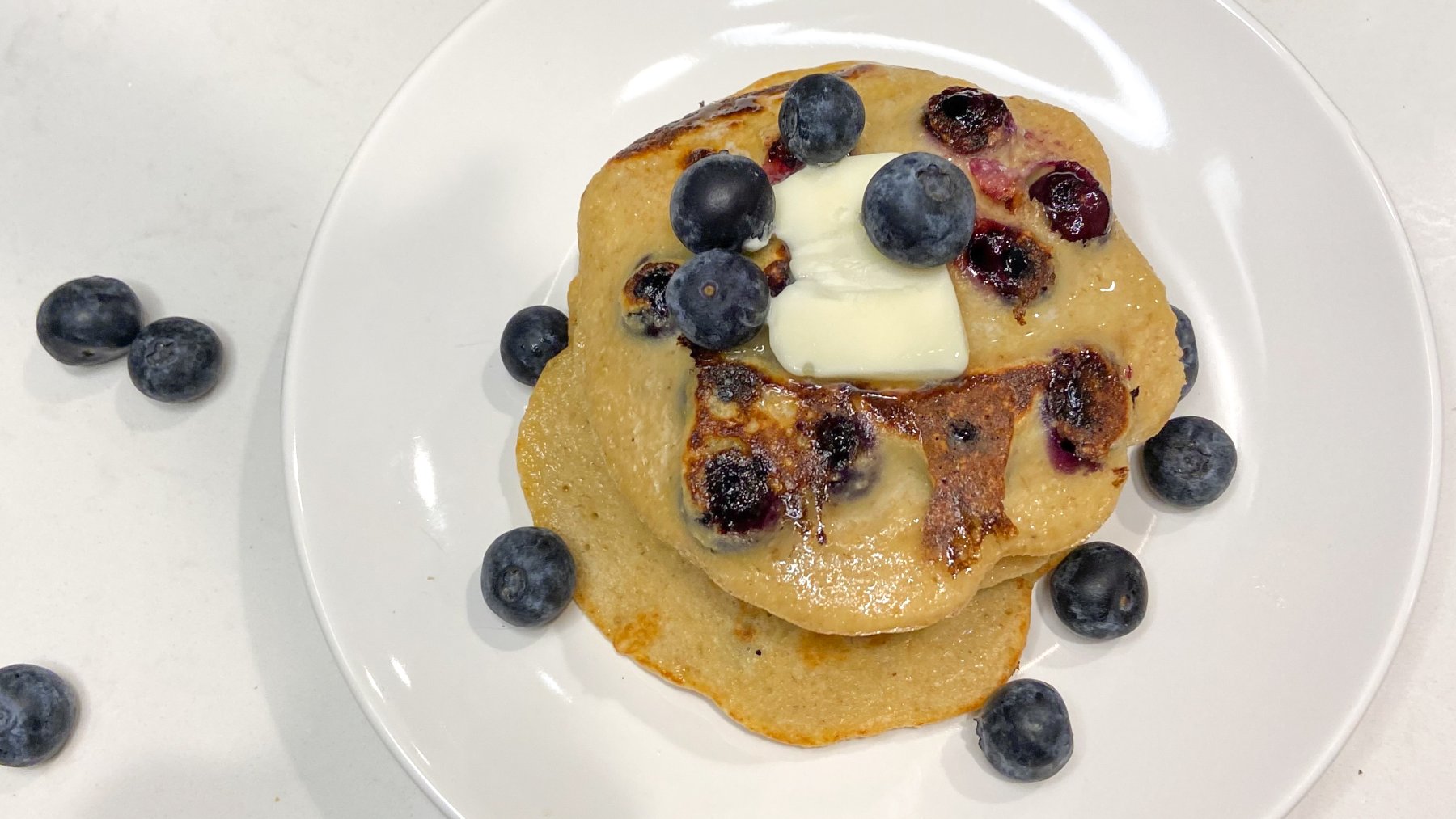This post contains links through which we may earn a small commission should you make a purchase from a brand. This in no way affects our ability to objectively critique the products and brands we review.
What Are Blue Zones? An Interview With Dan Buettner
Evidence Based Research To fulfill our commitment to bringing our audience accurate and insightful content, our expert writers and medical reviewers rely on carefully curated research.
Read Our Editorial Policy
Although many believe their lifespans to be mostly genetic-based and unchangeable, only 20% of our longevity is dictated by our genes. The good news? This leaves 80% of how long we live to environmental and lifestyle factors within our control, including what we eat, how we move, and who we surround ourselves with.
Five populations around the world have got it right when it comes to eating, moving, and socializing for longevity. Known as the Blue Zones, these unique areas have higher percentages of healthy centenarians—people who live to be 100 or more without developing chronic conditions.
TNI Editor-in-Chief Lexi Kassler was fortunate enough to sit down with Dan Buettner at this year’s Newtopia Now trade show in Denver, Colorado. Dan is a Blue Zones expert and researcher, National Geographic Fellow, host of the Netflix docuseries Live to 100: Secrets of the Blue Zones, and New York Times bestselling author of many books, including The Blue Zones Kitchen.
Let’s hear more about what he’s learned from researching and living like someone in the Blue Zones.
What Are the Blue Zones?
The “Blue Zone” name originates from the authors of a September 2004 study that identified Sardinia, Italy, as a region with the highest concentration of male centenarians.
This inspired Buettner and his team to seek out additional regions of extreme longevity that they dubbed “blue zones,” the name of which simply came from the researchers drawing blue circles on areas of the map.
As Dan told us, “We set out to reverse-engineer longevity. Instead of looking for longevity in a test tube or a Petri dish, we found five populations around the world that are living manifestly longer than the rest of us.”
Dan continues, “Something’s going on in these populations that is driving extraordinary longevity.”
The five currently identified Blue Zone regions in which the inhabitants seem to have discovered the key factors linked to living a long life are:
- The Barbagia region of Sardinia: This mountainous region of a tiny island off the coast of Italy is home to the longest-lived men in the world.
- Okinawa, Japan: A set of islands off the southern end of Japan, Okinawans with the longest-lived women worldwide.
- Loma Linda, California: The Seventh-Day Adventist community in this Southern Californian city has lifespans seven years longer than the U.S. average.
- Nicoya, Costa Rica: An 80-mile peninsula in Central America where adults have a three-fold better chance of becoming a healthy 95-year-old than the average population.
- Ikaria, Greece: The residents on this small Aegean island live an average of 8 years longer than Americans, with extremely low levels of chronic disease and almost non-existent dementia.
How to Live a Long Life, According to the Blue Zones
Although all five Blue Zones have remarkably extended longevity, they don’t all eat the same things—understandably so, as they are different cultures all over the world. For example, the Okinawans of Japan eat a lot of rice, tofu, and yams, while the Nicoyans in Costa Rica enjoy much more tropical fruit.
Despite their differences, Dan and his team identified a handful of commonalities that comprise the Blue Zone diets—primarily that they eat a whole-food, plant-based diet with much less meat than standard Western cultures.
Some core foods that comprise Blue Zone meals are beans, nuts, whole grains, tubers, and plenty of vegetables and local fruits.
Beans and whole grains are particularly prominent—and the research backs up why they are so linked to longevity. As Dan told us, each cup of beans you eat per day is linked to an additional four years of life expectancy.
Other commonly consumed foods in the Blue Zones that contribute to a long and healthy life include green tea, moderate amounts of red wine, berries, nuts, leafy greens, olive oil, oily fish, whole grains, herbs, and spices.
This is about as far away as you can get from the Standard American diet rife with processed and fast food, ultra-sugary sodas, factory-farmed meat, and ketchup as often the only veggie around. As Dan told us, “The average American loses 12 years of life expectancy by eating the Standard American Diet.”
But the Blue Zones aren’t just about food—many lifestyle choices also play a role in their long lives.
The essential principles of living a Blue Zone life include:
- Knowing your purpose and direction: Known as ikigai in Okinawa or plan de vida in Costa Rica, having a purpose for your life is linked to longer lifespans. Research has found that Japanese men and women who practiced “ikigai” had a reduced risk of mortality over a 12-year study.
- Strong sense of community and belonging: Whether through religious organizations, volunteering, or a solid core group of friends and family, community and belonging are paramount to longevity.
- Constant daily movement: Blue Zoners are constantly moving throughout the day—they certainly aren’t staring at screens for 11 hours and then going to a HIIT class for 45 minutes. Between walking up steep mountains, gardening all day, or simply not driving everywhere, the Blue Zones are in environments that inspire natural movement.
- Not overeating: Following the 80% rule, or the Okinawan’s concept of “hara hachi bu,” people in the Blue Zones eat until they are 80% full—no food comas there!
- Practicing stress-reducing rituals: Whether it’s the Sardinians’ daily 5 o’clock glass of red wine and laughter with their friends, the afternoon Ikarian nap, or the Seventh-Day Adventists’ daily prayers, rituals associated with stress reduction can lengthen lifespan.
Can Everyone Live Like the Blue Zones?
As most people can’t pick up and move to Greece or Costa Rica, you may wonder if the “Blue Zones life” can be emulated anywhere in the world.
It’s certainly true that all of the Blue Zone philosophies can be mimicked—and at little to no cost.
That said, Dan rightly mentioned that these inhabitants have a geographical advantage. For example, they live in regions with few to no tropical diseases, where it’s temperate enough to be outside, gardening or walking most days, and in steep villages and mountains that create built-in Stairmasters.
As Dan puts it, “The environment engineers their unconscious decisions. They’re moving more, eating better, and living purposefully because of their environment and natural ecosystem.”
But it’s not all about geography. Dan says, “The central characteristic is that the healthy choice is the easy choice, and that idea is transportable.”
In your life, some ways to make the healthy choice easier could include placing fruits and vegetables front-and-center in your fridge, not driving by your favorite fast food joint on the way home, or never keeping soda on hand so you drink more water.
Making the healthy choice easier was one reason why Dan created the Blue Zones Kitchen, a cookbook for Americans based on foods that people in the Blue Zones are eating. With 100 recipes that typically take less than 30 minutes and cost less than $2 per meal, the Blue Zone is not some fancy and expensive diet.
Dan says, “People want to make a health change, and the best way is through their mouth. I realized that my longevity evangelism is best done through food.”
In addition to their basis of plant-based whole foods, all the recipes have one essential thing in common: “It has to be maniacally delicious.” Amen to that!








